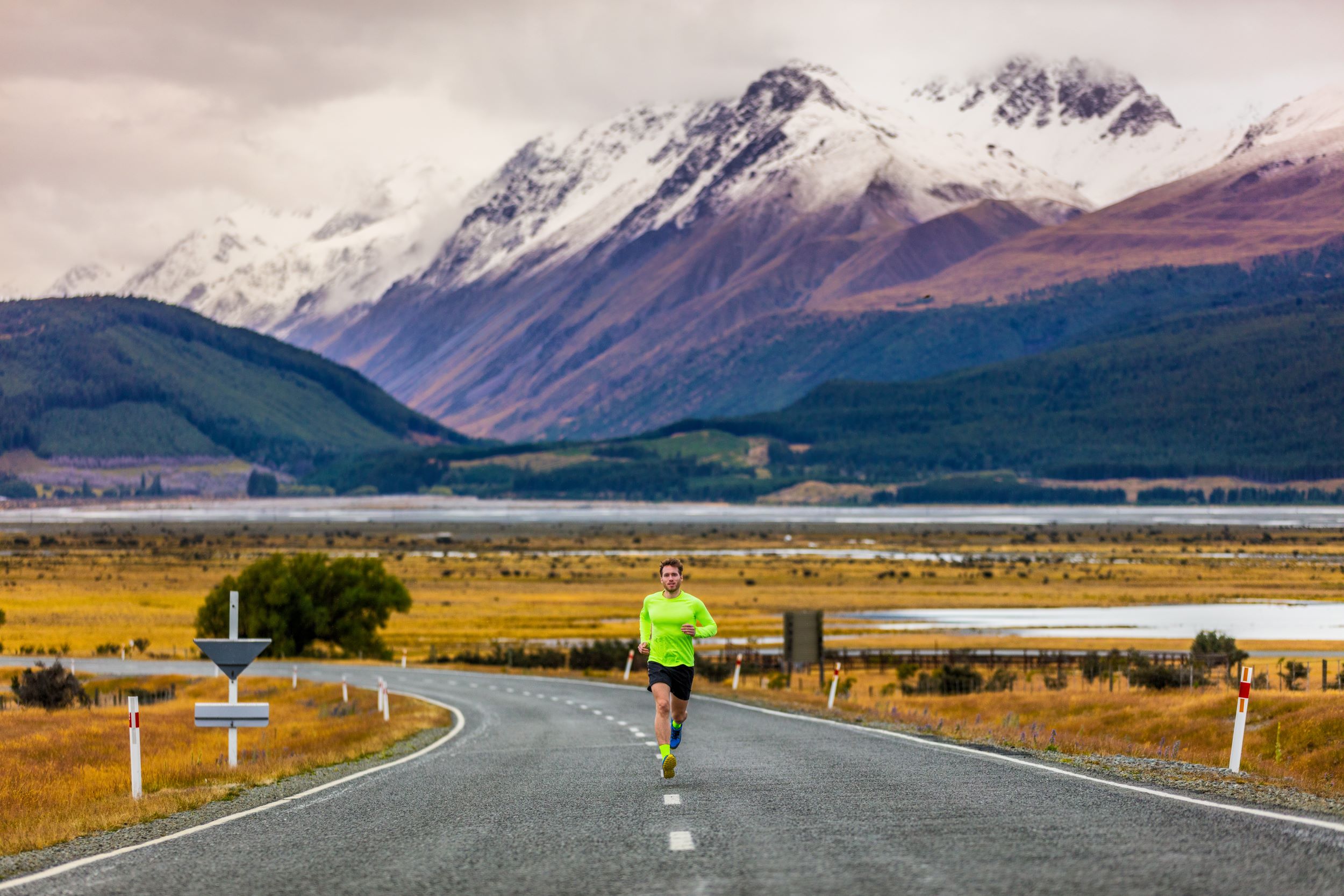Welcome to the scenic running tracks of New Zealand, where the air is crisp and the landscapes are breathtaking. The land of the long white cloud offers an incredible backdrop for runners looking to challenge themselves with a half marathon. Whether you’re a seasoned athlete or a beginner eager to set a new personal record, our Ultimate Half Marathon Training Plan NZ is designed to help you cross the finish line with confidence.
Running a half marathon in New Zealand means preparing for a variety of weather conditions and terrains. From coastal paths offering views of the Pacific to hilly trails that wind through verdant forests, each race presents its own set of challenges and rewards. That’s why our training plan is tailored to help you adapt to New Zealand’s unique environments, ensuring that you’re ready for anything on race day.
Embarking on this journey requires more than just physical endurance; it’s about embracing the spirit of adventure that characterizes New Zealand’s running community. Join us at Run Just For Fun, where every step is a leap towards fitness freedom. Visit our website to learn more and get started today! Click here.
Crafting Your Personal NZ Half Marathon Strategy

Success in a half marathon starts with a well-crafted strategy that respects your personal goals, fitness level, and the unique conditions of New Zealand’s landscapes. When crafting your personal NZ half marathon strategy, consider the following key elements:
- Baseline Fitness Assessment: Understand where you stand in terms of endurance, speed, and general fitness. This will help you to set realistic goals and track progress.
- Customized Training Schedule: Your plan should reflect your lifestyle and availability, balancing running with rest and recovery. It’s important to gradually increase your distance over time to avoid injury.
- Nutrition and Hydration: Tailor your diet to support your training, focusing on foods that provide sustained energy. Hydration is especially crucial in New Zealand’s varied climates.
- Varied Terrain Preparation: Incorporate different types of terrain in your training to mimic race conditions. New Zealand offers everything from city pavements to rugged trails, so your legs should be ready for both.
- Mental Toughness Training: Mental endurance is as important as physical strength. Practice visualization and develop a positive mindset to keep you going when the going gets tough.
- Race Day Tactics: Plan your race day thoroughly, from what you’ll eat in the morning to your pacing through each section of the race. Familiarize yourself with the course to strategize your energy expenditure.
By integrating these components into your half marathon strategy, you can create a personalized plan that aligns with the demands of New Zealand’s courses and your individual aspirations. Remember, a successful half marathon is not just about the race itself but the journey of transformation leading up to it.
Essential Gear for Half Marathon Success in NZ
Equipping yourself with the right gear is essential for half marathon success, especially in New Zealand where weather conditions can be unpredictable. Here’s a list of essential gear that will help you stay comfortable and perform your best:
- Running Shoes: Invest in a high-quality pair of running shoes that offer good support and are appropriate for the terrain you’ll be training on. It’s advisable to get fitted at a specialist store to find the perfect match for your foot type and gait.
- Technical Apparel: Choose moisture-wicking fabrics for your running clothes to keep you dry and prevent chafing. Layers are key for New Zealand’s variable climate, so include options for both warm and cool conditions.
- Hydration System: Whether it’s a handheld bottle, a hydration belt, or a backpack, make sure you have a way to carry water or sports drink, especially for long training runs.
- GPS Watch or App: Tracking your pace, distance, and time can be invaluable for training and on race day. Choose a reliable GPS watch or a smartphone app that suits your needs.
- Sun Protection: New Zealand’s sun can be harsh, so never underestimate the importance of sunscreen, sunglasses, and a cap or visor.
- Anti-Chafing Balm: Apply anti-chafing balm to any areas prone to irritation before long runs to prevent discomfort.
Having this essential gear will not only enhance your comfort and performance but also ensure you’re prepared for any conditions you might encounter during your NZ half marathon journey. Remember, the right gear can make a significant difference in your training effectiveness and race day experience.
Nutrition and Hydration Tips for NZ Runners
Maintaining optimal nutrition and hydration is crucial for half marathon runners in New Zealand. The country’s varied climate can impact your hydration needs, and the hilly terrain may increase your energy expenditure. Here are some key tips to help you stay nourished and hydrated:
- Stay Hydrated: Begin hydrating well before your run and continue to drink water regularly throughout. Electrolyte drinks can be beneficial during longer runs to replace salts lost through sweat.
- Carbohydrates Are Key: Prioritize carbs in your diet as they provide the energy needed for endurance training. Include a variety of sources such as whole grains, fruits, and vegetables.
- Protein for Recovery: Include a good source of protein in your post-run meal to aid muscle recovery. Lean meats, dairy, or plant-based alternatives like legumes can fulfill this need.
- Timing Matters: Eat a light, carb-rich snack about 30-60 minutes before running to fuel your workout. Post-run, have a meal or snack that combines carbs and protein within 45 minutes to optimize recovery.
- Practice Your Race Day Nutrition: Use your long training runs to trial what you plan to eat before and during the race. This will help you avoid any gastrointestinal issues on the day.
By focusing on these nutrition and hydration strategies, NZ runners can enhance their training and improve their performance. It’s important to listen to your body and adjust your intake based on your individual needs and the specifics of your training regimen.
Injury Prevention and Recovery Techniques
For half marathon runners, preventing injuries is as important as the training itself. Developing a comprehensive injury prevention and recovery plan is vital to ensure that you can train consistently and perform your best. Here are essential techniques to incorporate into your half marathon training plan:
- Gradual Progression: Avoid increasing your mileage too quickly. Follow the 10% rule by not increasing your weekly distance by more than 10% from the previous week to minimize the risk of overuse injuries.
- Strength Training: Incorporate strength exercises into your routine to improve muscle balance and joint stability. Focus on core, hip, and leg strength to support your running mechanics.
- Flexibility Work: Regular stretching and mobility work can improve your range of motion and reduce the risk of muscle strains. Consider yoga or Pilates as a supplementary activity.
- Proper Footwear: Invest in a good pair of running shoes that suit your gait and replace them regularly to ensure adequate support and cushioning.
- Rest and Recovery: Schedule rest days to allow your body to recover. Sleep is also a crucial component of recovery, so aim for 7-9 hours per night.
- Listen to Your Body: Be attentive to signs of fatigue or pain. If you experience persistent discomfort, take a break and consult with a healthcare professional specialized in sports medicine.
Combining these injury prevention and recovery techniques with your half marathon training plan in NZ will help you stay healthy and ready for race day. Remember, consistency is key, and taking the time to recover properly can be just as important as the training itself.
Joining New Zealand’s Running Community

Joining New Zealand’s running community can transform your training experience from a solitary endeavor to an engaging social activity. Visit our website to learn more and get started today! Click here. Being part of a community offers motivation, advice, and camaraderie, which are invaluable during your half marathon journey. Whether you’re in Auckland, Wellington, Christchurch, or beyond, there’s a vibrant group of runners waiting to welcome you.
Local running clubs often organize group runs, which can provide a structured environment for your workouts. Additionally, participating in local races and events is a fantastic way to meet fellow enthusiasts and experience the collective energy of the running community. Social media platforms and online forums also offer virtual spaces for runners to connect, share experiences, and offer support.
Moreover, joining a community gives you access to a wealth of knowledge. Seasoned runners can offer insights on the best routes, nutrition tips, and how to adapt the half marathon training plan nz to the country’s unique terrains and conditions. You’ll also find opportunities to volunteer at events, which is a rewarding way to give back to the community that supports you.
Embrace the spirit of togetherness and let the shared passion for running fuel your training. Together, every step becomes more meaningful, and every achievement is celebrated. Visit our website to learn more and get started today! Click here.


